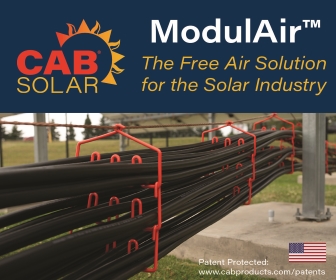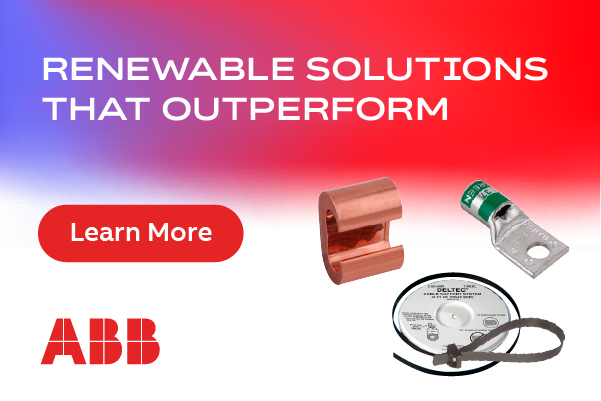Selecting Low-Voltage Switchgear for Grid-Tied Inverters
When selecting AC and DC switchgear for grid-tied inverters, system designers have a variety of options. There are key design considerations to avoid downtime and reduce overall project costs.
In many design decisions, there is a "good," "better," and "best" scenario directly proportional to cost. As inverter-pricing pressures escalate, many vendors are faced with decisions involving quality and cost tradeoffs. Because many inverter customers are not experts in AC or DC switchgear, it can be tempting to select less than optimal equipment with a lower upfront cost, but may not be well suited for the application long-term.
DC-side design choices
Most inverters have some type of disconnect on the DC side to isolate the inverter from the DC source.
The DC disconnect has multiple purposes including:
- A way to isolate and disconnect the inverter for service.
- Means to isolate the DC source (so work can be performed).
- Isolation of the power module in the inverter (if the power module fails).
In cases with multiple power modules in the inverter, the DC disconnect becomes even more important. Multiple power modules mean multiple potential points of failure. With proper isolation capabilities on both the AC and DC side, such inverters can become fault tolerant. This is most commonly achieved by isolating a failed module while allowing the other modules to continue operating. This is a critical function, particularly with two or more power modules in the inverter. Without this feature, modular inverters can become substantially less reliable.
An alternate approach involves integrating a DC disconnect on each power module, but only in the + line. While this can stop power flow to the inverter for maintenance purposes, it doesn't isolate the DC bus in case of power module failure. This approach may be cheaper and easier, but it compromises fault tolerance of the inverter.
The final option is putting one large DC disconnect on the + line. This provides for no containment of a failed power module and no fault tolerance. Although this method can seem attractive when considering initial equipment costs, the long-term operating cost impact of this approach is greater.
AC-side design choices
Given the higher frequency and usage stress of AC switching, the selection of proper equipment is even more important than for the DC side. Extensive research on installed bases of inverters has demonstrated that AC contactors have the highest failure rate of components in the power path of the inverter. In fact, AC contactors have demonstrated failure rates that are twice as high as the next component-IGBTs. Given the usage stress and documented field failure rates of AC contactors, proper selection of AC switchgear on the inverter is exceptionally important in impacting overall inverter reliability.
Similar to the DC side of the inverter, there are a few design choices for the AC side as well. This includes AC isolation of individual power modules, or isolation of the inverter for an entire unit.
The combination of AC contactor with a main breaker is effective in terms of both reliability and system protection. Contactors are specifically designed for a high duty cycle, and are well suited for regular and heavy daily usage. Circuit breakers, on the other hand, are optimized around fault clearing.
A contactor is not designed for fault protection, log-out/ tag-out, or manual isolation. However, the combination of the two addresses all the needs of an inverter, in a safe and reliable fashion.
A less expensive alternative would be to use one main AC contactor, but it doesn't provide fault isolation if a power stack fails.
A second factor to consider in either of these configurations is the selection of contactor technology. A conventional mechanical contactor will physically move a metal arm from an open to closed position. As the arm approaches the closed position, arcing occurs on the surface of the contacts due to the voltage across those contacts. As this arcing happens, the metallic surfaces can soften, melt, or deform slightly. Though individually these events are relatively minor, over time this surface pitting reduces the contactor's ability to open and close freely, and provides a low resistance current path. Vacuum technology, however, virtually eliminates this phenomenon. With a vacuum type contactor, the contacts actually open and close in a vacuum. This minimizes arcing and greatly enhances contactor life.
There are also various alternatives for inverter fault protection and isolation. The highest feature approach is an ANSI air power breaker. These typically have the highest interrupting fault current ratings and can clear such faults repetitively. Molded-case circuit breakers are another alternative, but typically don't have the same interrupting current ratings. Air power breakers also have the best capability to interface with utility protective relays. Finally, a fused mechanical switch provides for good fault interrupting current handling, but "blow" under such conditions, requiring component replacement to bring the device back into service.
An emerging low cost approach removes the AC contactors entirely, but uses a circuit breaker for daily isolation. Because breakers aren't meant to be operated as contactors, and have limited duty cycle in this application, this approach isn't recommended for long-term reliability. In particular, because this component has substantial operating stress and is a leading cause of field failures, it's wise to look for other cost-cutting opportunities.
Table 1. Summary of AC and DC design choices-as good, better and best:
|
Option |
DC side disconnect |
AC side primary protection |
AC side secondary protection |
|
|
Best |
1 |
Double-pole, load break rated |
Vacuum contactor on each stack |
ANSI air power breaker |
|
Better |
2 |
Single-pole, load break rated |
Mechanical contactor on each stack |
ANSI air power breaker |
|
Good |
3 |
Single-pole, load break rated |
Mechanical contactor for entire inverter |
Molded-case breaker |
|
Not recommended |
4 |
Single-pole, load break rated |
Nothing on each stack |
Breaker used as contactor |
There are a variety of protection and control options on both the AC and DC side of the inverter. Summarizing the options demonstrates a classical cost/benefit trade-off. Switchgear options which provide for maximum reliability and fault tolerance are substantially more costly, while less reliable ones are inexpensive. In this analysis, the most reliable approach uses AC vacuum contactors on each stack, and a main AC air power breaker.
Chris Thompson is the grid power business unit manager for Eaton Corporation.
Eaton Corporation | www.eaton.com
Volume: 2016 November/December










.png?r=1346)

